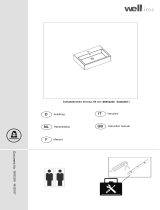
Safety
Please note: All safety regulations must be
complied with strictly.
Please read carefully the instructions supplied
with the appliance for installation, use and
maintenance before using the appliance.
The appliance must be installed in accordance
with the legislation and requirements applic-
able in your country.
All local regulations and the regulations relating
to national and European standards must be
observed when installing the appliance.
The appliance should preferably be installed by
an authorised installer. Installers will be aware
of the applicable regulations and requirements.
The appliance is designed for heating pur-
poses. All surfaces, including the glass and
connecting tube, can become very hot (over
100°C)! When operating, use a so-called "cold
hand" or an oven glove.
Ensure that the appliance is adequately
guarded if young children, disabled people, the
elderly or animals are present in the vicinity.
Safety distances from flammable materials
must be strictly adhered to.
Do not place any curtains, clothes, laundry or
other combustible materials on or near the appli-
ance.
When in use, do not use flammable or explos-
ive substances in the vicinity of the appliance.
Avoid chimney fires by having the chimney
swept regularly. Never burn wood with the door
open.
In the event of a chimney fire: close all the
appliance's air inlets and alert the fire service.
If the glass in the appliance is broken or
cracked, it must be replaced before the stove
is used again.
Do not exert force on the door, do not allow chil-
dren to pull on the opened door, never stand or
sit on the opened door and do not place heavy
objects on the door.
Ensure that there is adequate ventilation in the
room in which the appliance is installed. If vent-
ilation is insufficient, combustion will be incom-
plete whereby toxic gases can spread through
the room. See the chapter "Installation require-
ments" for more information on ventilation.
Installation
requirements
General
The appliance must be connected tightly to a well-
functioning flue.
For connection measurements: see "Technical
data" appendix.
Ask the fire service and/or your insurance com-
pany about any specific requirements and reg-
ulations.
Flue
The flue is needed for:
Removal of combustion gases via natural draught.
As the warm air in the flue or chimney is lighter
than the outside air, it rises.
Air intake, needed for the combustion of fuel in the
appliance.
A poorly-functioning flue or chimney can cause smoke
to escape into the room when the door is opened.
Damage caused by smoke emissions into the room is
not covered by the warranty.
Do not connect multiple appliances (such as a
boiler for central heating) to the same flue,
unless local or national regulations allow this.
In the event of two connections ensure that the
difference in height between the connections is
no less than 200 mm.
Ask your installer for advice regarding the flue. Refer
to the European norm EN13384 for a correct cal-
culations for the flue.
12
Subject to change because of technical improvements





















